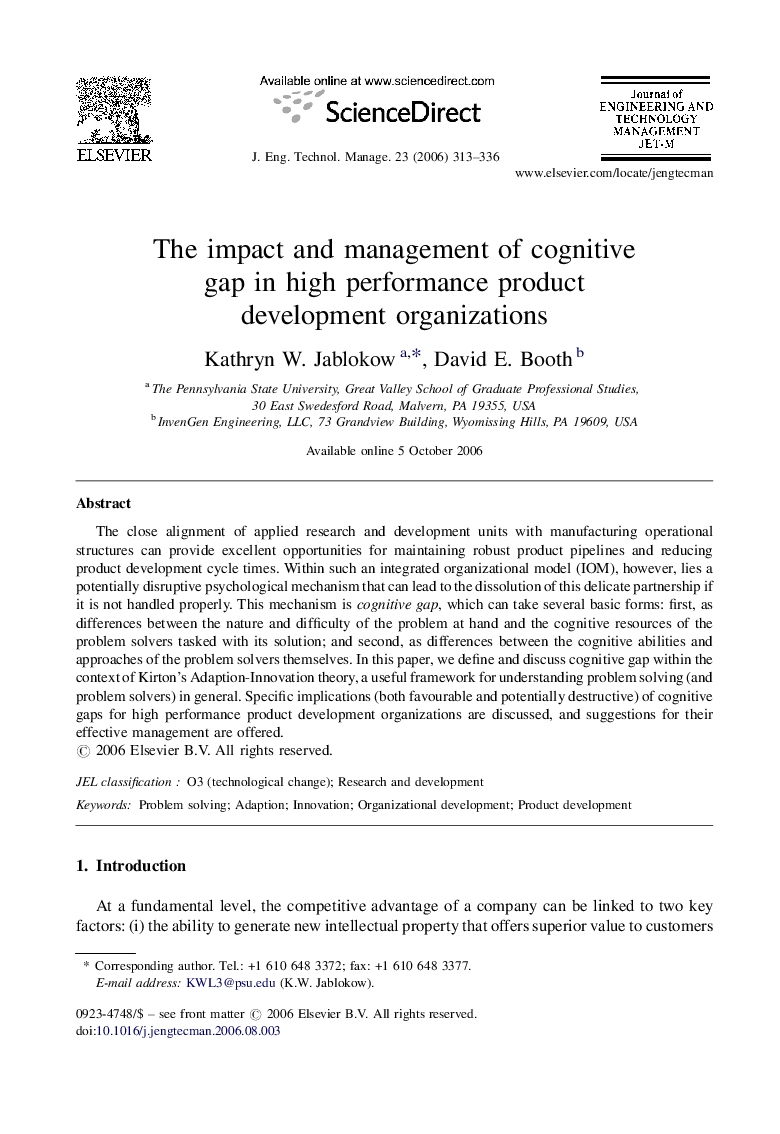| Article ID | Journal | Published Year | Pages | File Type |
|---|---|---|---|---|
| 1006458 | Journal of Engineering and Technology Management | 2006 | 24 Pages |
The close alignment of applied research and development units with manufacturing operational structures can provide excellent opportunities for maintaining robust product pipelines and reducing product development cycle times. Within such an integrated organizational model (IOM), however, lies a potentially disruptive psychological mechanism that can lead to the dissolution of this delicate partnership if it is not handled properly. This mechanism is cognitive gap, which can take several basic forms: first, as differences between the nature and difficulty of the problem at hand and the cognitive resources of the problem solvers tasked with its solution; and second, as differences between the cognitive abilities and approaches of the problem solvers themselves. In this paper, we define and discuss cognitive gap within the context of Kirton's Adaption-Innovation theory, a useful framework for understanding problem solving (and problem solvers) in general. Specific implications (both favourable and potentially destructive) of cognitive gaps for high performance product development organizations are discussed, and suggestions for their effective management are offered.
